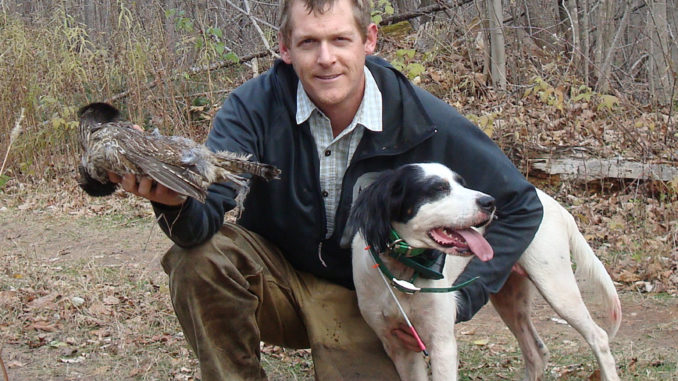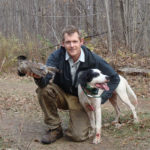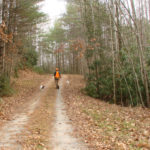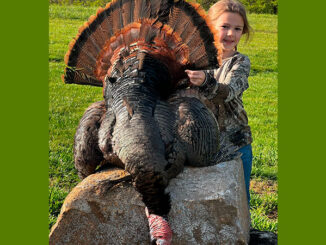
A good dog, some good grouse cover and a nice January day can mean great upland hunting in North Carolina.
If you’ve been considering joining a gym, buying some exercise equipment or taking up a weight-loss program to try and drop those 10 pounds — or maybe it’s 15 — you may have added over the holidays, here’s an alternative.
For about the same amount of money you can buy a shotgun, get a good hunting dog and take up grouse hunting. Not only will you most likely lose weight and improve your physical condition, you’ll see some beautiful sights and just maybe kill a bird or two to enjoy in a delicious and healthy recipe.
Ruffed grouse hunting in the Appalachian Mountains is one of the most difficult bird hunts there is. Grouse are most-often found in extremely rugged terrain where easy shots are rare, so be prepared to enjoy and endure the pursuit more than the kill.
According to Joshua Swaim of Winston Salem, a guide, dog breeder and trainer, a successful day is when you “flush six to eight birds and see one of those for more than a second.”
Often, the goal is to find areas with birds, then return in a week or so and hunt those same areas on high alert, knowing that there’s a good likelihood of jumping a bird.
While grouse have been reported at lower elevations in North Carolina, the best concentrations are found at the higher elevations of the Pisgah National Forest and along the entirety of the North Carolina/Tennessee border. Grouse flourish in early successional growth conditions, and populations will grow quickly after habitat disruptions like fire or wood cutting.
You will be searching for areas of new growth, six to 15 years old, where fires, ice storms, wind shears/tornadoes or logging operations have cleared an area, resulting in new growth that provides forage and ground cover — and where tree growth is high enough to provide overhead protection from hawks. Some prime grouse habitat can be found around Roan Mountain near North Harper Creek Falls. Also check creeks through wide plains like Roan Creek.
Locate a food source that they are using, and then look to repeat that pattern, much like in bass fishing. Foods include bugs, wild strawberries (both the green leaves and fruits), clover, tree buds during winter, dried grapes or berries on vines, or apples still hanging on trees.
Grouse can be found by hunting along logging trails or access paths, especially those with what Swaim calls “premium gravel.” Grouse peck at this gravel, which they ingest and store in their craws to aid in digestion. Look for patches of small, rough gravel on paths near recently cut or burned areas or other forage and cover.
Grouse will be near a gravel road or path most mornings and evenings. Not only do they need the gravel, but they like a spot where they can see down the road and have retreat cover to their rear. They’ll roost at night by the path, and early in the morning, they might be sitting in a nearby tree.
Swaim recommends you “spend half the day hunting previously located, productive spots and the other half looking for new areas”. In between, take a nice lunch break as the most-productive times between daylight and noon and from 2 p.m. until dark.
According to Swaim, the perfect area offers “two opposing slopes — berries, apple trees or wild strawberries on one side and low conifers for cover on the other.” If you find these with a “premium gravel” path down the middle, you’ve likely found grouse nirvana. Swaim uses satellite images on Google Maps to find a drain with good cover on a North facing slope and new growth on the other side.
Hunt slowly and be prepared for a flush with each step. While some talking isn’t bad, Swaim said “Don’t stop and talk.” Often, the birds will stay put if they hear something moving past, but if it stops and they can get a fix on its location, they’ll flush and you won’t get a shot.
Flushed birds will often light in cover 100 to 300 yards away, so watch their departure and hunt the good cover in that area while staying prepared for a point and flush. Ease in from the top or the opposite side, but don’t chase after him, always giving the bird a chance to settle down, move around and bring the dogs in from a different direction.
You’ll do better if you move a little bit, stop, move a little, stop and give the dogs time to hunt. Don’t charge through, but stop and stand while the dogs work. When you’re with multiple hunters and dogs, try to stay close together, let the dogs hunt out ahead and on both sides of the path. Don’t let them range too far out as the brush is thick and a close in flush is necessary to get a good shot.
If you go through a place one day and get a good point or miss a bird, go back to the same general area the next day or a week later. They’ll be in the same zone, and you’ll know to be ready.
It takes a skilled marksman to hit a grouse, as they flush quickly and like to dive for the first cover. When you hear the flush begin to move the gun as your eyes search for the bird, always knowing where your partners are.
“Watch your dogs; they’ll tell you if there are birds in the neighborhood,” Swaim said. “Well, a good dog will.” Nervous dogs and unproductive points are a good sign. Many times a grouse has recently been there, and may have run just ahead. Prepare for a flush either as you walk further, or often when you stop a short ways down the path.
DESTINATION INFORMATION
HOW TO GET THERE/WHEN TO GO — A large section of the Pisgah National Forest is in counties along the Tennessee-North Carolina border west of the Boone/Blowing Rock area. It can be entered at hundreds of access points, some obvious and some not so. Boone is best reached by US 421 from the east, and Blowing Rock is best reached by US 321 from the south. North Carolina’s grouse season runs from Oct. 14-Feb. 28, with a daily bag limit of three and a session limit of 30. Birds are less jumpy early in the season, and roads and trails won’t be iced over.
GUIDES/HUNTING INFO — Joshua Swaim, Appalachian Mountain Setters, 336-413-8079, www.WingFlyCo.com. See also Guides and Charters in Classifieds. An outing or two with an experienced guide can help you learn to identify areas to hunt — and especially how to locate the smaller areas with higher concentrations of grouse. They can show you how to use the latest in dog handling technology and GPS units that let you know where your dogs are and alert you when they go on point.
ACCOMMODATIONS — Pineola Inn, Pineola, 828-773-4979, www.pineolainn.com.
MAPS — One of the best paper maps is the National Geographic Typographical Map No. 783 covering much of the Pisgah and Cherokee National Forest, www.natgeomaps.com/appalachiantrail. Another useful tool for exploring these areas is Delorme’s North Carolina Atlas and Gazetteer, www.delorme.com. Great tools for identifying potential areas are the N.C. Wildlife Resources Commission’s interactive game land maps, www.ncwildlife.org/Hunting/WheretoHunt/PublicPlaces.aspx. Use these to locate potential hunting areas, and then fine tune your search using satellite images on Google Maps to locate new growth that will stand out against the older growth forests. Some hunters travel with laptop computers or tablets using a wireless link to aid in their search. A smart phone can be used to view maps in the woods. Handheld GPS units will help you find the spots you mark on your interactive maps and also help you find your way back out.






Be the first to comment